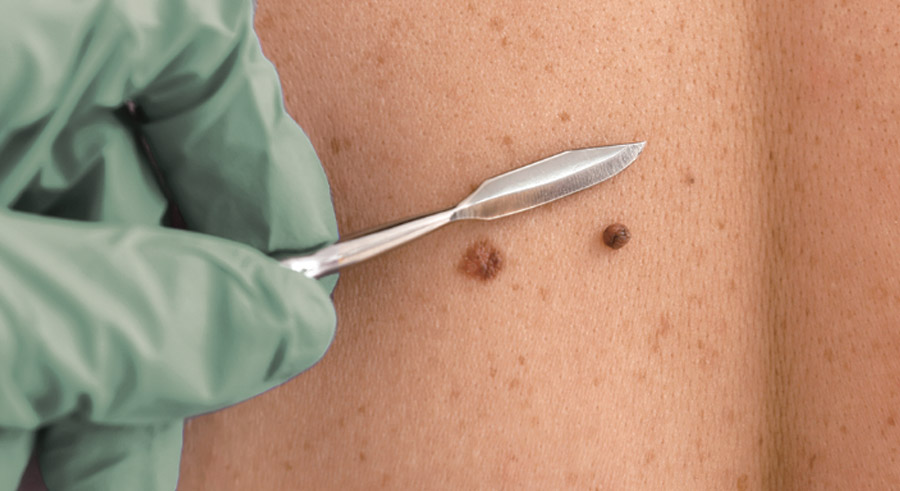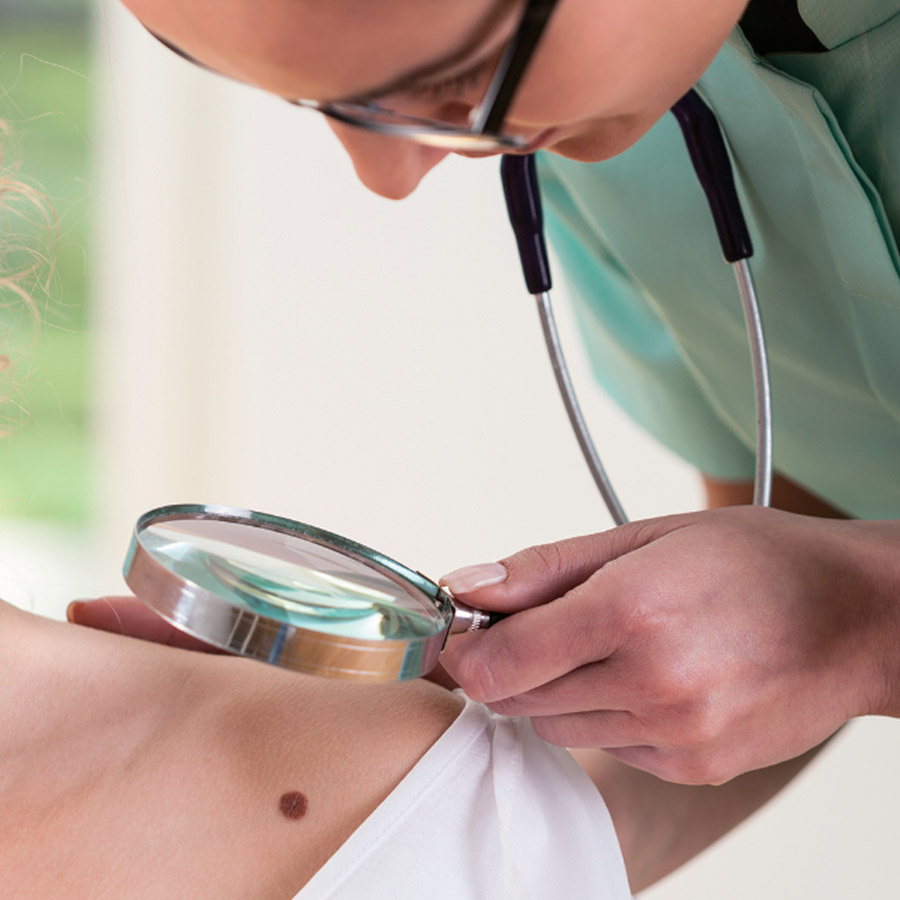Melanoma is an extremely serious form of skin cancer responsible for about 75% of the deaths related to skin cancer, even though it accounts for only 1-2% of all skin cancers. If melanoma is identified and treated early, it is highly curable. It is much more likely to spread, if untreated, than other forms of skin cancer.
Melanocytes are the cells that produce melanin, the dark pigment that protects the deeper layers of the skin from the harmful effects of the sun. Ultraviolet (UV) radiation from sunlight or tanning beds can cause these cells to grow out of control and form tumors called melanoma.
Melanoma affects people of all ages. People who have had melanoma, have a family history of melanoma, or those with light hair, fair skin and light colored eyes are at higher risk
- AKs appear as patches of skin that can become discolored, scaly or rough. They can be flat or slightly raised and can vary in color from pink to brown, or may appear as rough patches. Other symptoms may include burning sensations or itching.
- People with fair skin and light-colored eyes and hair are susceptible to AK development.
- Those with weakened immune systems due to chemotherapy, transplants or immunodeficiency disorders also have an elevated risk for developing AKs.
- AKs are not malignant but have the potential to develop into Squamous Cell Carcinoma, (a form of skin cancer). lf diagnosed and treated early, AKs are not life-threatening, though it is important to have any suspicious lesions checked by a dermatologist.
- AKs may disappear and reappear, so it is necessary to consult your dermatologist even if a suspicious lesion disappears.
What are the warning signs?
Melanomas can resemble or even develop from moles. Moles are brown spots or growths on the skin and are usually harmless, but not always. It is extremely important to check your skin frequently and look for the ABCDE warnings of melanoma:
Asymmetry – if the mole is irregularly shaped or the two halves of the mole do not match;
Border – if the edges of the mole are uneven, scalloped or notched;
Color – if the mole is a variety of colors or different shades of brown, tan or black;
Diameter – if the mole is larger in diameter than a pencil eraser (1/4 inch or 6 mm);
Evolving – if the mole changes in any way (size, shape, color) or begins to bleed, itch or form a crust.
Treatment Options
Any suspicious growth should be examined by your dermatologist as soon as possible. After you are examined by your dermatologist, a biopsy will typically be performed to obtain a definitive diagnosis. A thin layer of skin containing and surrounding the lesion will be removed, most often with the use of a local anesthetic.
A dermatopathologist will then microscopically examine the sample to determine if tumor cells are present. If the diagnosis is melanoma, staging of the cancer, (which is described to what degree the cancer has spread), will also be indicated.
The treatment for melanoma is based on many variables including: stage of the cancer and the location; size; and subtype of the tumor. Age and general health of the patient are also taken into consideration. Treatment for melanoma can include:
If the cancer has spread to lymph nodes, the affected nodes will also need to be removed.
Reducing the Risk of Melanoma
Avoid overexposure to sunlight. Following sun protection guidelines can help reduce the risks associated with atypical nevus, especially between the hours of 10 am and 4 pm when the sun is directly overhead. It is important to remember that, even on overcast days, damaging ultraviolet rays can pass through clouds. Use caution when around water, sand, and snow because all can reflect the sun’s rays.
Take protective measures.
Wear broad-brimmed hats, tightly-woven clothing, and sunglasses.
Use sunscreen.
Choose a sunscreen with minimum SPF (Sun Protection Factor) of 30 with protection from both UVA and UVB rays. Reapply often on all exposed skin, including the lips.
Always avoid tanning and never use UV tanning beds.
Check your skin regularly.
Examine your entire body, and report any suspicious lesions to your dermatologist.
Self-Examination
- Once a month, it is essential that you examine your skin. Early detection is necessary for preventing the development of skin cancer.
- Using mirrors, scan your entire body looking for slow-healing sores or areas that continuously itch or are painful. Pay close attention to moles or spots that change shape, size, or color.
- If you see something unusual, make an appointment with a dermatologist as soon as possible.





